Genesis is a conglomerate of mythical beings, hailed to be the successors to Oracle Think Tank. (when was it first debuted?) The clan revolves around adapting the abilities of other clans and replacing the cost with soul blasting. For example, Eternal Goddess, Iwanagahime soul blasts to retire the opponent’s front row, an effect similar to Dragonic Kaiser Vermillion’s skill.
Genesis also takes on the mantle of divination. Goddess of Good Luck, Fortuna increases the possibility of getting a trigger by soul blasting whenever you drive check a grade 1 or greater unit to pitch the unit and perform another drive check.
Ever since its introduction, the consistent theme and speciality in Genesis had always revolved around activating its abilities through soul-blasting. This is no different from its latest support in the Generation Era in G BT 04.
The most recent Genesis support evokes a Royal Paladin-style superior calling, revolving around the theme of Norse mythology. It also fixes a key issue of most Genesis decks: inconsistent soul-charging. Divination is now much more deadly, with a new stride unit that can rearrange the top cards of your deck before you even drive check. Below is the new G-era deck list for Genesis.
Fimbulwinter
G4
Great Angel, Doom Brace x 4
Mythical Destroyer Beast, Vanargandr x 4
G3
Mythic Beast, Fenrir x 4
Oracle Queen, Himiko x 2
Omniscience Regalia, Minerva x 2
G2
Mythic Snake, Jormungand x 4
Unappeasable Biter, Gleipnir x 4
Witch of Ravens, Chamomile x 3
G1
Goddess of Decline, Hel x 4
Mythic Beast, Skoll x 4
Mythic Beast, Hati x 4
Witch of Frogs, Melissa x 2
G0
Fetter of Leather, Leyding x 1
Battle Maiden, Kukurihime x 4
Witch’s Familiar, Shiroma x 4
Crits of your choice x 2
Dreaming Dragon x 2
Heals of your choice x 4
Main Focus: This deck focuses on an incredibly strong mid-game, able to quickly change the tempo of the game by forcing a no-guard from the opponent and pushing the opponent to high damage quickly. The deck then combines strong defensive hand advantage and high power RG columns to whittle down the opponent and ultimately aiming to finish with Vanargandr.
This is easily accomplished by creating two RG columns upon first stride (using Doombrace) that guards for 15k each, often tempting the opponent to no-guard on the first RG attack or force a sub-optimal guarding. The first stride technique is also incredibly consistent thanks to the ability of Fenrir and the starter to call out 2 units immediately upon first stride.
Starting off with the main boss unit of the deck: Mythic Beast, Fenrir soul charges whenever you stride and gives you a 1/turn ability to call a unit which you soul blasted that turn. This helps to generate field advantage and ensure a consistent stream of rearguards to mount an
offensive. Great Angel, Doom Brace synergises well with Fenrir, allowing you soul blast units out and call them with Fenrir’s skill as well as powering up existing rear guards on the field.
Mythical Destroyer Beast, Vanargandr grants you the ability to look at the top few cards of your deck before you drive check and rearrange them at the top or the bottom. This serves not only in netting triggers but also improves the quality of your drive check, allowing you the option of digging for more useful cards. You should only stride this unit when you have either Mythic Snake, Jormungand or Mythic Beast, Hati on both rearguard lanes OR you have no rearguards for Doom Brace’s power boost. This is because when both Hati or Jormungand are on the field, they gain +1k power for each soul-blasted unit, netting you an additional 6k power when Vanargandr's effect is triggered. Otherwise, Doom Brace's +5k power is the better and more consistent option.
Oracle Queen, Himiko and Omniscience Regalia, Minerva are the backup G3s for the deck. Break riding Minerva on Himiko allows her to utilise the break ride skill to soul blast twice to draw a card, given enough soul. This evokes the threat of a restanding vanguard coupled with powered-up rearguard lanes. If you have strode twice and know that the opponent has a
PG and few G0s, you can also break ride Fenrir on Himiko, activate his guard restrict skill and prevent the opponent from guarding with a PG.
Mythic Snake, Jormungand and Mythic Beast, Hati will form the core of your offense. They have the ability to gain power for every card soul blasted that turn.
Unappeasable Biter, Gleipnir is the backup soul charger should you fail to ride Fenrir. He can also net you card advantage if you soul blasted that turn.
Witch of Ravens, Chamomile and Witch of Frogs, Melissa can be called out by themselves when soul blasted. This helps to counter heavy field disruption decks and ensures that you are not too reliant on Fenrir for rearguards. Furthermore, since Fenrir is a 1/Turn skill, you can use these two cards to call out multiple RGs, enabling you to fill your field more easily.
Fetter of Leather, Leyding goes into the soul and allows you to call out another unit when you soul blast that turn. Coupled with Fenrir, it ensures that you can call out at least 2 units from the soul on your first stride.
Battle Maiden, Kukurihime is the emergency go-to card when you lack just a tiny bit of soul.
Witch’s Familiar, Shiroma’s effect will only work when you have a Witch vanguard. This card helps to fix a trigger-flooded opening hand as well as helping to soul charge.
Genesis decks have always faced the issue of soul charging too much and decking out. The turnover in cards for G-Genesis is especially high due to the fact that you draw 1, soul charge 3 with Fenrir's skill, and triple drive (average 7 cards/turn). Dreaming Dragon allows you to return your drop zone to your deck, essentially refreshing your deck and allowing you to prolong the game, while allowing you to draw another card for an overall neutral outcome. This is critical against tanky and grindy decks which try to deck you out. Another benefit of this card is the potential to increase the trigger ratios in your newly-refreshed deck. Hence, it is possible to focus on soul blasting triggers and key cards such as PGs that you may have unfortunately soulcharged so that you can return them later to your deck. Optimally, try to keep this unit in your soul and bring it out with Fenrir when you need it. Do run only 2 of it.
Overall, this deck is great at accomplishing what it was set out to do-create power columns that quickly push your opponent to late game. Utilising a strong defensive hand advantage achieved from conserving the no of units that needs to be called from hand to the field, high power RG columns with Doom Brace enable you to gradually whittle down your opponent's hand and then push for the finish.
Vanargandr as G-Genesis's ace deserves special mention because it is incredibly powerful since it forces your opponent to perfect guard it or no guard it. Since the Genesis player knows exactly what is on the top 4 cards of his deck, it is incredibly easy for the Genesis player to create conditions that will permit him to break his opponent's defence.
If the opponent guards for 2 pass, it is possible for the Genesis player to easily play around it (eg. check top 4, 1 trigger among the 4 cards. Put 3 cards at the bottom to increase chances of checking triggers). Thus, the chances of netting 1 extra trigger is extremely high. Furthermore, since the Genesis player knows that the top card is a trigger, he can easily follow Stride Rule no. 1.
Stride Rule no. 1: Your opponent guards for 2 pass, and you have a Vanguard that does triple drive. If your first drive check is a trigger, you should all-in, because the chance of netting an additional trigger on 2nd or 3rd drive check is high.
In other words, Vanargandr makes Stride Rule no. 1's condition much easier to clear. A smart opponent will perfect guard it. If no perfect guard is forthcoming, it is much better for the opponent to take his chances by no-guarding because it is so much easier for Genesis player to fulfil the 2 pass condition. Furthermore, when combined with strong RG lanes (which can be achieved with Hati and Jormungand), it means that the opponent will probably have to take a lot of damage or lose a lot of hand size when he faces Vanargandr as a strong centre lane.
So the moral of the story is that Vanargandr when combined with double guard 15k RG columns at high damage is pretty fearsome. The opponent is confronted with a very bad catch 22 situation with few ways to escape unscathed unless he is at low damage.
This G-Genesis decklist was kindly provided to me by Zhi Wei, a fellow Vanguard player and friend. This article was jointly written by Zhi Wei and me.
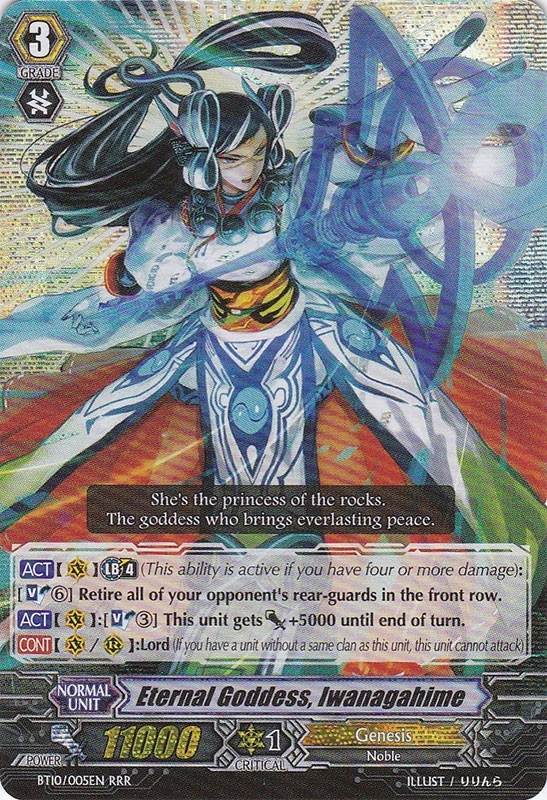
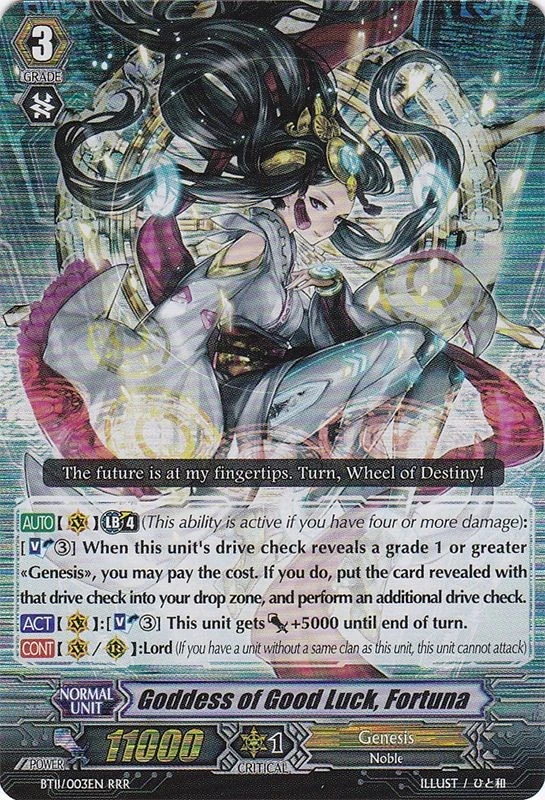
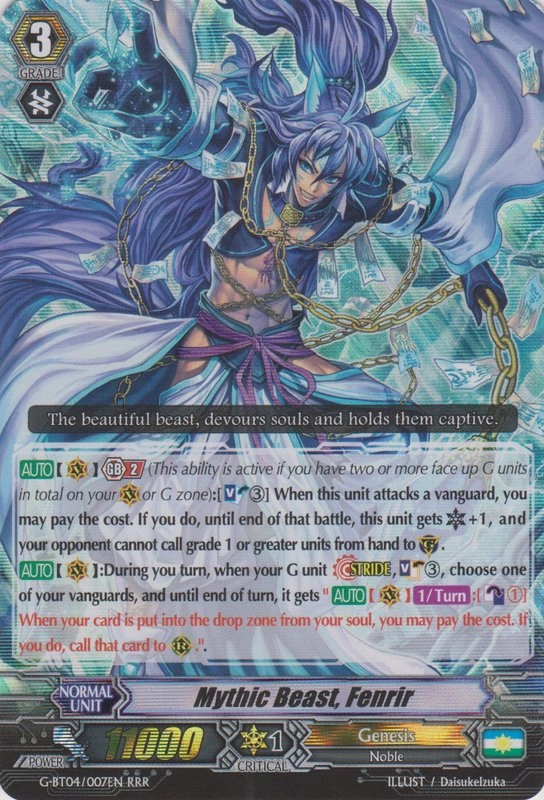
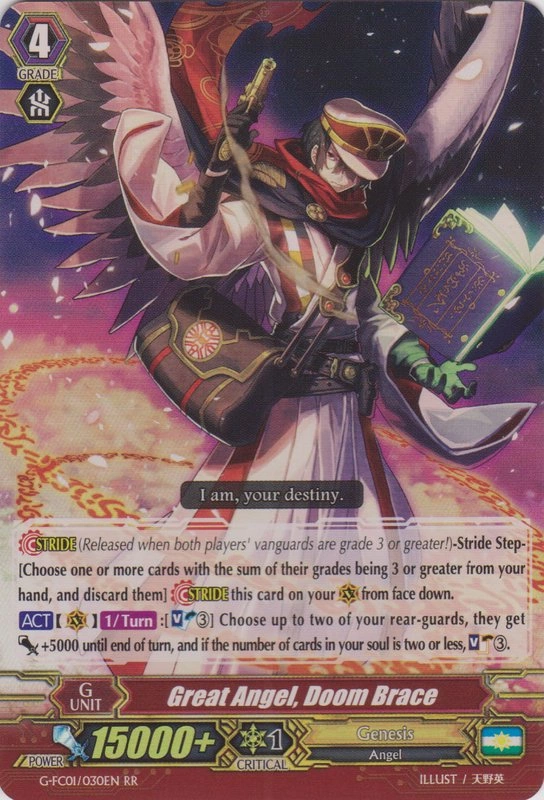
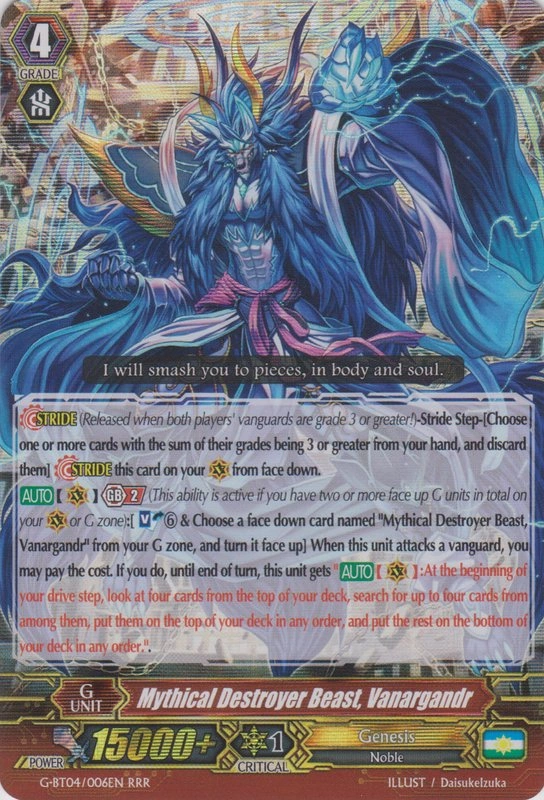
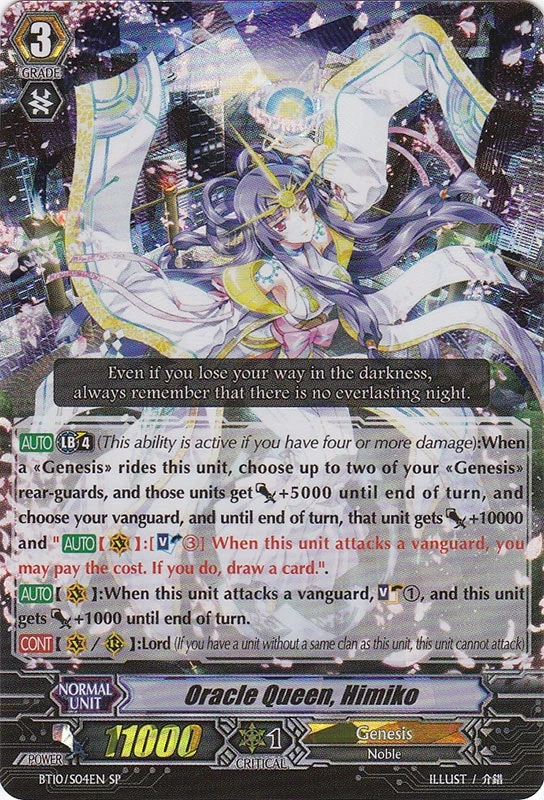
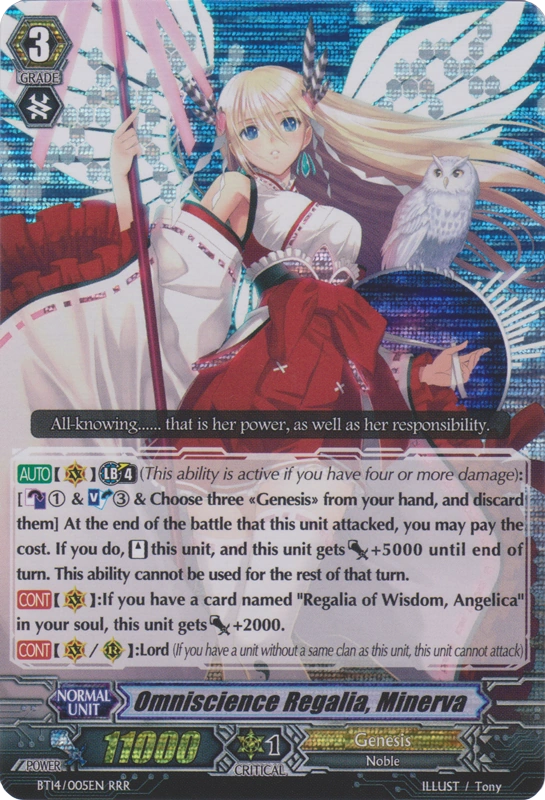
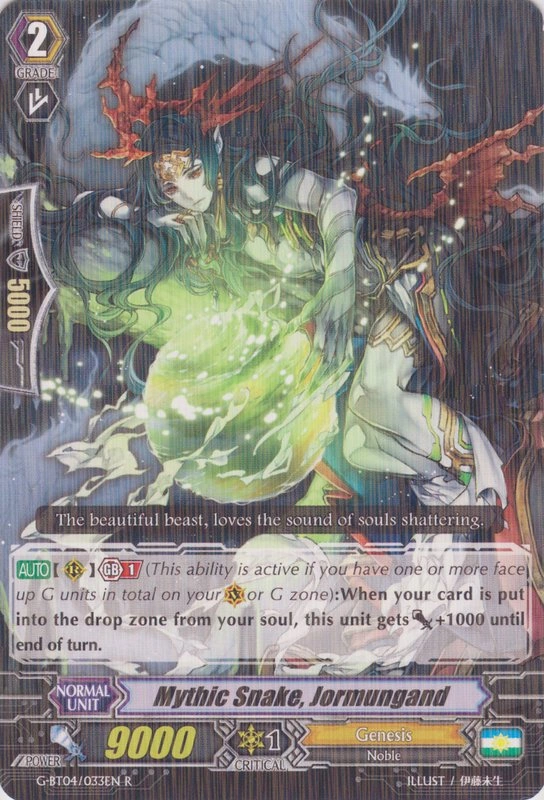
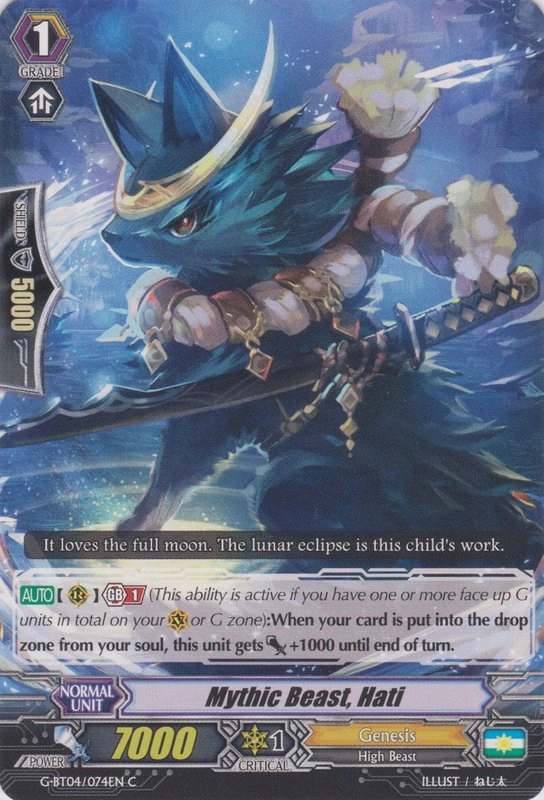
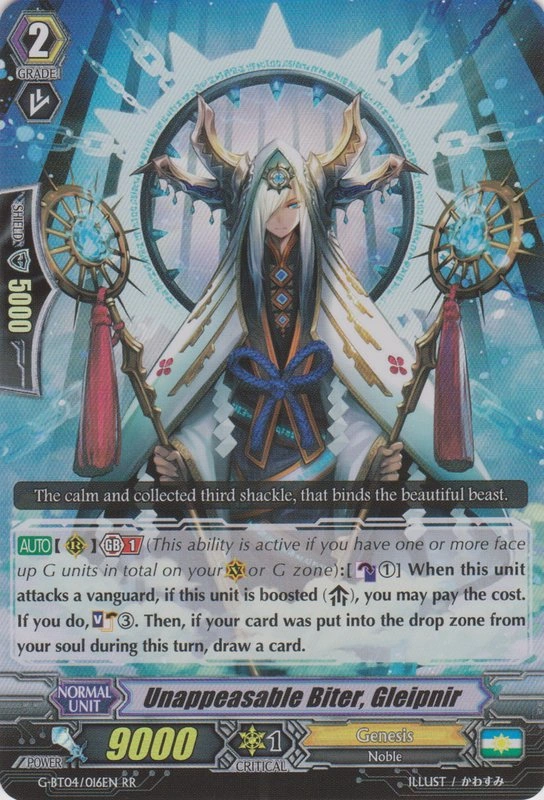
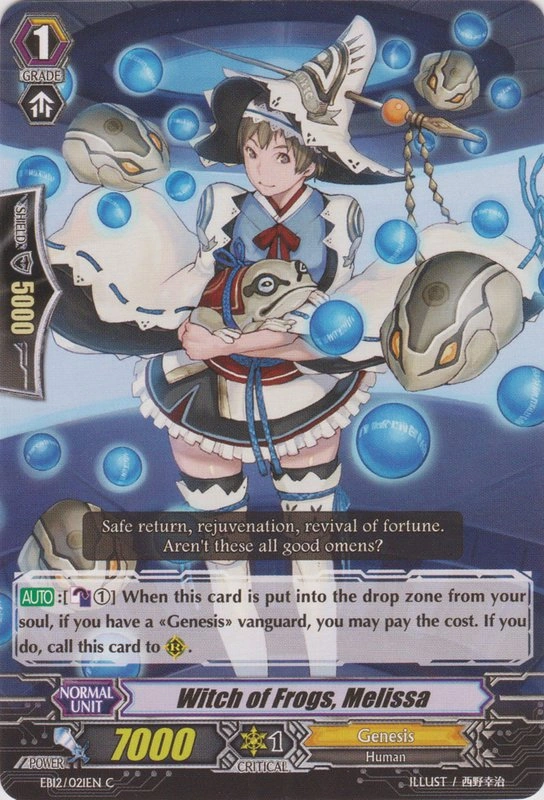
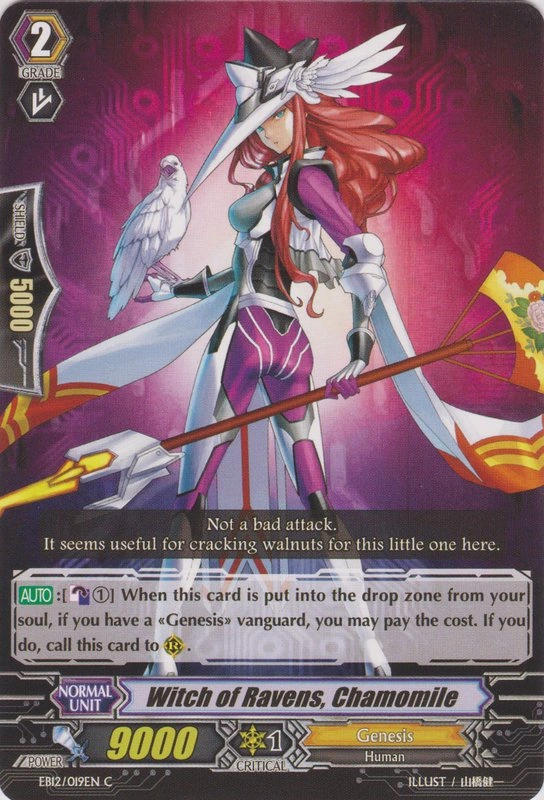
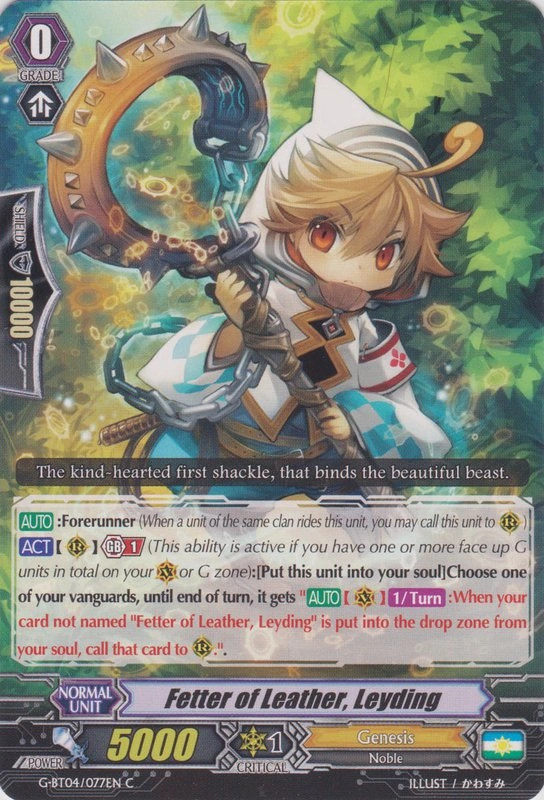
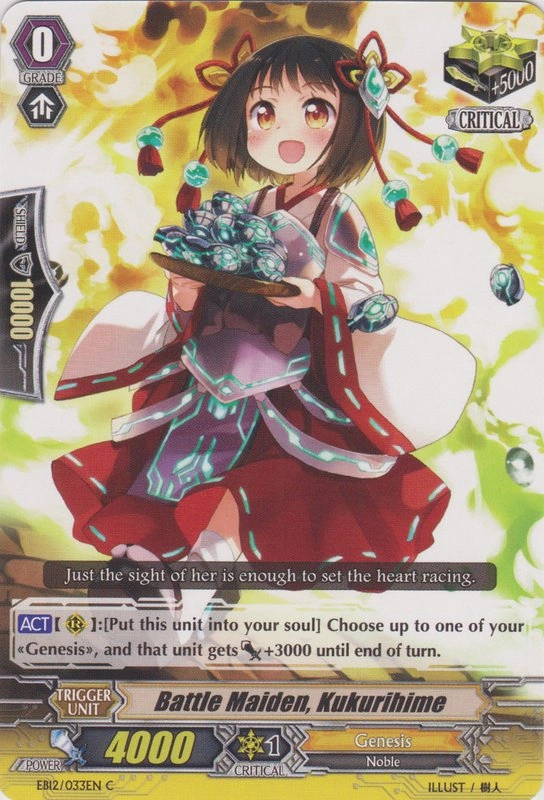
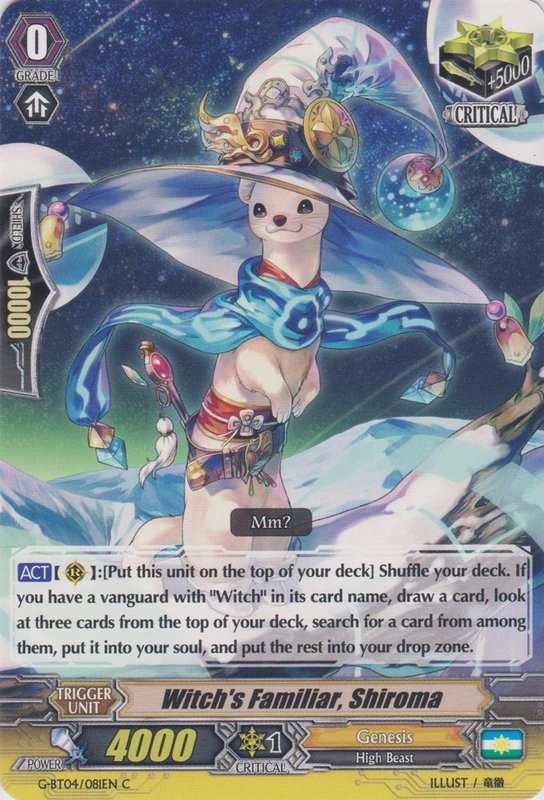
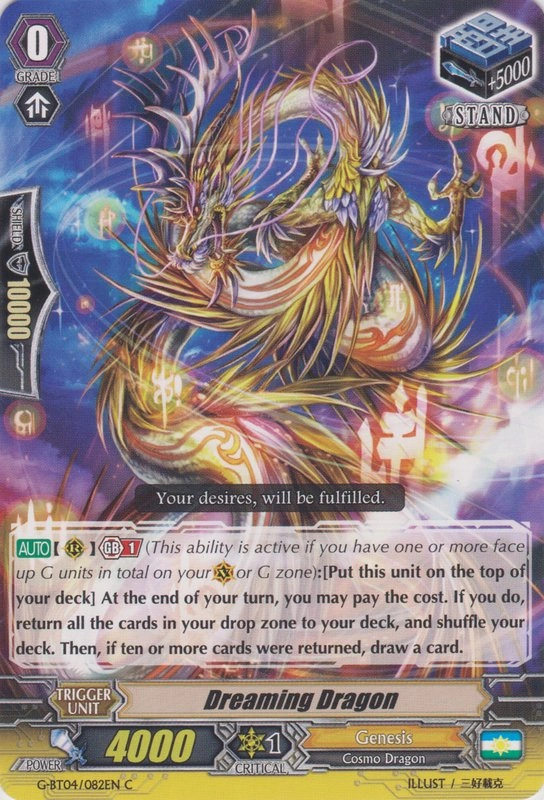
No comments:
Post a Comment